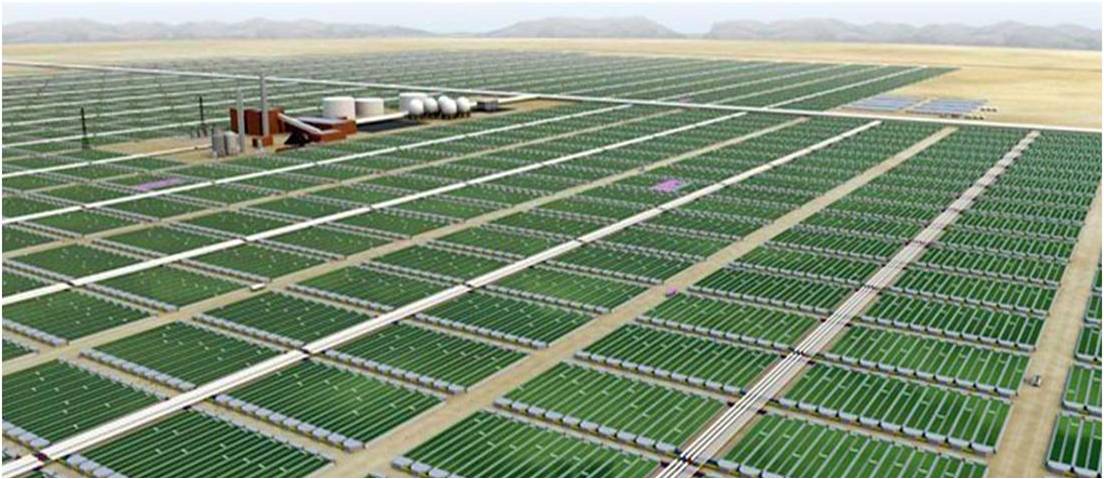

Combustion Chemistry and Pollutant Emissions from Algae Derived Biofuels
NSF CBET 0854134

Principal Investigator:
Associate Professor
Department of Mechanical Engineering
Colorado State University
Fort Collins, CO 80523-1374
The Case for Algae

Biofuels are classified as renewable because the carbon present in the vegetable oil or animal fat feedstocks originates from carbon dioxide already present in the atmosphere as compared to fossil fuels in which the carbon in the fuel is liberated from beneath the surface of the earth and released into the atmosphere. Biofuels also offer additional benefits such as reduced CO, HC, SOx and PM emissions and the potential to reduce U.S. dependence on imported petroleum. However, if biofuels are to attain a significant penetration into the global energy portfolio, the following issues need to be addressed:
1) The production of many biofuels, such as corn ethanol, is excessively energy intensive. For example, although estimates vary, most studies suggest that for every 1 unit of energy contained in corn ethanol, the equivalent of 0.8 units of fossil fuel energy input are required.
2) Most of the biofuels in use today result in very poor yield of fuel energy per acre of crop. For example, 1 acre of soybeans yields only 60 gallons of biodiesel.
3) Most biofuels in use today utilize feedstocks that might be better used to contribute to the limited global food supply. In the United States, soy biodiesel and corn ethanol represent the overwhelming majority of transportation biofuels in widespread production. Both directly compete with the global food supply.
4) Combustion of biofuels can result in increases in some pollutants. For example, ethanol has been shown to produce increased formaldehyde and acetaldehyde emissions and biodiesel has been shown to produce increased NOx emissions, increased particle-bound organic carbon emissions and decreased mean particle diameter, which can have adverse health effects.
Algae-derived fuels have the potential to solve each of the above issues, resulting in a high-yield, efficiently produced, renewable fuel that does not compete with the global food supply. Many microalgae strains have been identified that produce up to 75% of their dry weight in bio-lipid oil, which suggests that they can be converted to biofuels via lower energy processes. Furthermore, current estimates suggest that it may be possible to produce between 10,000 and 20,000 gallons of biofuel per acre of algae, compared to 60 gallons per acre for soy biodiesel. Moreover, with hundreds of algal strains currently under consideration for full-scale production of algal oil, the potential exists to select strains that minimize pollutant emissions, including NOx and PM.
Rationale and Objectives of this Study
Studies have shown that pollutant emissions (e.g. NOx and PM) from engines operating on straight vegetable oil (SVO) and biodiesel can be linked to the chemical structure of the triglycerides present in the bio feedstock. However, little work has been done to date to characterize the combustion chemistry and pollutant formation chemistry of algae-derived biodiesel or SVO. Accordingly, this multidisciplinary research study will examine the effect of the chemical structure of algal bio-crude feedstocks on pollutant formation chemistry. Four separate experimental systems are being employed, which span the spectrum of complexity from fundamental gas-phase combustion chemistry, to two-phase chemically reacting flow, to engine-out diesel emissions . Specifically, experiments include:
The experiments will be performed using algae-derived straight vegetable oil (SVO), fatty acid methyl esters (FAME) and hydrotreated renewable diesel (HTRD), each of which will be produced from algal bio-crude.
This material is based upon work supported by the
National Science Foundation under Grant No. 0854134. Any opinions,
findings, and conclusions or recommendations expressed in this material
are those of the author(s) and do not necessarily reflect the views of
the National Science Foundation.
Last Updated: October 7, 2009